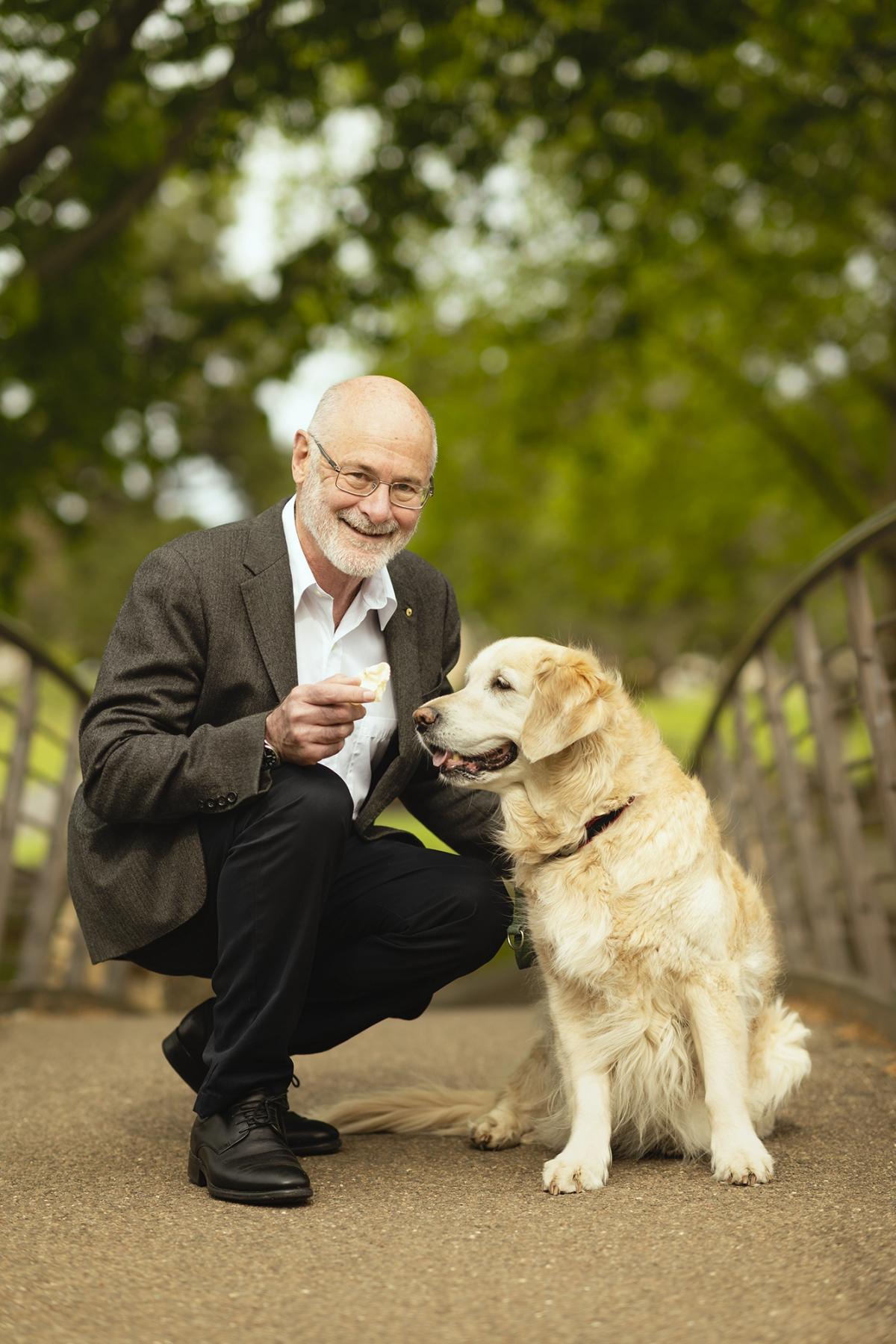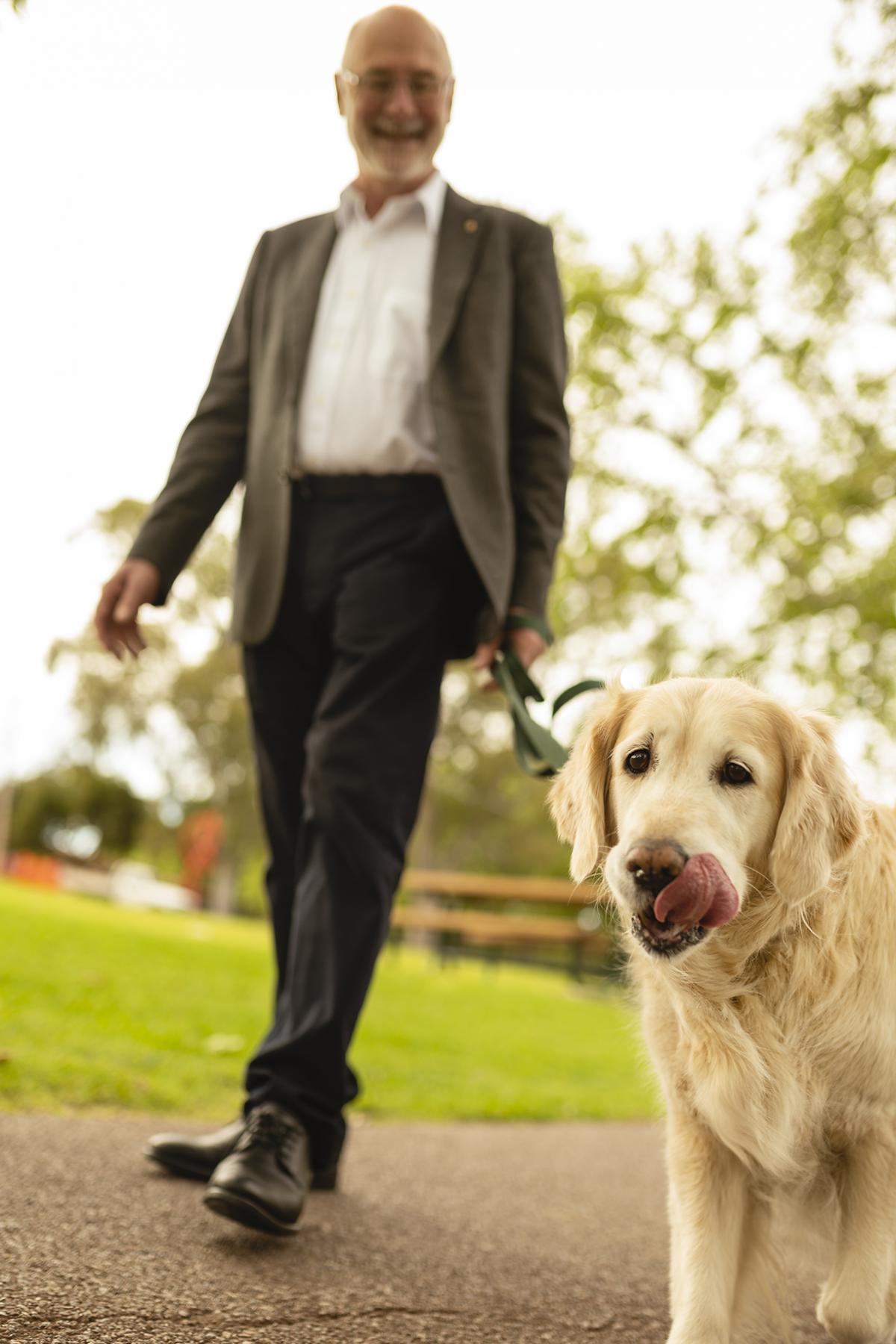Connected Conversations | Roger Byard
A prosperous career in forensic pathology has made Professor Roger Byard a well-known name around the world. Recently named the world’s top researcher in forensic science by the Australian, Roger is passionate about blending the disciplines of forensics and medicine. Having made his mark in Bali, Thailand, Canada and the US, Roger is also a frequent visitor of local Adelaide restaurants with his golden retriever, Lucy (who loves papadums).

Please tell us a little bit about yourself.
My name is Professor Roger Byard AO PSM and I hold the Marks Chair of Pathology at the University of Adelaide. I have been associated with the University now for over 30 years—both as a teacher and a researcher. I am also a Senior Forensic Pathologist at Forensic Science SA. Being able to blend medicolegal work with academic work has been a great privilege and has opened so many doors to investigating all types of natural and unnatural deaths. For example, it recently enabled me to be part of a group working in collaboration with Harvard University in Boston, United States. That group was the first to work out why babies who die of sudden infant death syndrome (SIDS) do not just lift their heads up when they are lying prone. It is because they have a defect in substance P in brainstem centres that control head and neck movement. We are now following up on this discovery by looking at possible genetic causes for this. So, it appears that we have found one cause for SIDS!
What was your first area of study and what drew you to this space?
I first did research work with geriatric patients in clinical practice before I moved into paediatrics. Interestingly enough, my latest textbook is on Geriatric Forensic Medicine and Pathology, so I seem to have come a full circle. It just received a 2021 British Medical Association award for excellence in publishing. What drew me to research in medicine was simply the vast number of unanswered questions that exist in every field.
What has been your journey to get where you are today?
My initial aim was to do clinical medicine. For five years, I worked in hospital emergency departments and wards, including doing Royal Flying Doctor Service and aeromedical work in north-east Arnhem Land in the Northern Territory and qualifying in general practice in Canada. Once I discovered pathology, I became very interested in paediatric pathology and then forensics. I naturally drifted into the very niche area of paediatric forensics. Keeping research enthusiasm alive is, however, always a challenge.
What are you working on now?
My focus has always been particularly on paediatric forensic issues and especially sudden infant death syndrome (SIDS). I also have a program that I call the ‘Keeping Your Baby and Child Safe’, whereby I have reviewed all cases of unexpected deaths in children over the decades, looking for causes and preventive strategies. I passionately believe that good forensic practice requires a solid grounding in research and so I have published many papers and texts in the academic literature. As part of my ongoing studies, I have also achieved three higher doctorates by thesis or research: a Doctor of Philosophy (PhD), a Doctor of Medicine (MD), and a Doctor of Science (DSc). All of this is aimed at helping me learn about this fascinating field. When students ask me how long it takes to become a forensic pathologist, I tell them that I am still studying. So, clearly, it is not for the faint-hearted!

What do you love most about working at the University of Adelaide?
There are many great things about working at the University—not the least of which is to see my postgraduate students develop worthwhile and fulfilling careers in research. The University has also enabled me to become an expert in the field of paediatric forensics, resulting in invitations to present training and educational workshops to scientists, medical doctors, law enforcement officers, and lawyers on this material in over 30 countries. This type of international contact and collaboration fuels research ideas and activities, as well as being very fulfilling for myself. I learn something new in every place. It has also recently opened up collaborations with a human rights activist lawyer in Chandigarh, India, leading to publications on acid attacks, dowry deaths, honour killings, and gender discrimination and inequality.
What opportunities do you see for the future?
Having forensic links means that I can provide undergraduate courses on forensic topics as well as having postgraduate students working on projects. I have been the Editor-in-Chief/Managing Editor of Forensic Science Medicine and Pathology (Springer Publishers, New York) since 2008, and was registered as an Expert with the International Criminal Court (ICC) in 2009. All of this means that very diverse forensic research in many fields is ongoing, but it must be nurtured.
Have you ever had a life-changing experience?
I think that working on body identifications with the Australian Federal Police in Bali after the 2002 bombings and in Thailand after the 2004 tsunami made me realise just how fragile existence is and how we must maximise what we get out of every day. Life is too short to waste on doing tasks or jobs that you don’t find fulfilling.

What’s something most people don’t know about you?
My Aboriginal tribal name is Galumé, which means pelican. It was given to me when I worked amongst the Yolngu people in Arnhem Land many years ago. This contact gave me a great interest in Indigenous health issues and a desire to study the role played by traditional healers and sorcery in medical outcomes. It also made me realise the importance of ritual in all branches of medical practice, even in the sterile wards of our own hospitals.
What is your top café / restaurant recommendation in Adelaide?
My favourite restaurant is Indii Flavours on O’Connell Street, North Adelaide. It has the best Gujarati vegetables and Punjabi butter chicken (which has a wonderful smoky flavour). My dog, Lucy, particularly likes their papadums.
What kind of difference would you like to make in the world?
I think that translating findings from the mortuary into community safety and health prevention programs has been one of my major contributions. I have invented a new area of medicine that I have called ‘preventive pathology’ to transfer this information into practice. Last year, I was very honoured to be ranked in the top two per cent of scientists worldwide by Stanford University and number two in the field of Legal and Forensic Medicine for this and my other research activities. I just want this to continue and to have my students follow me and do better than me.
